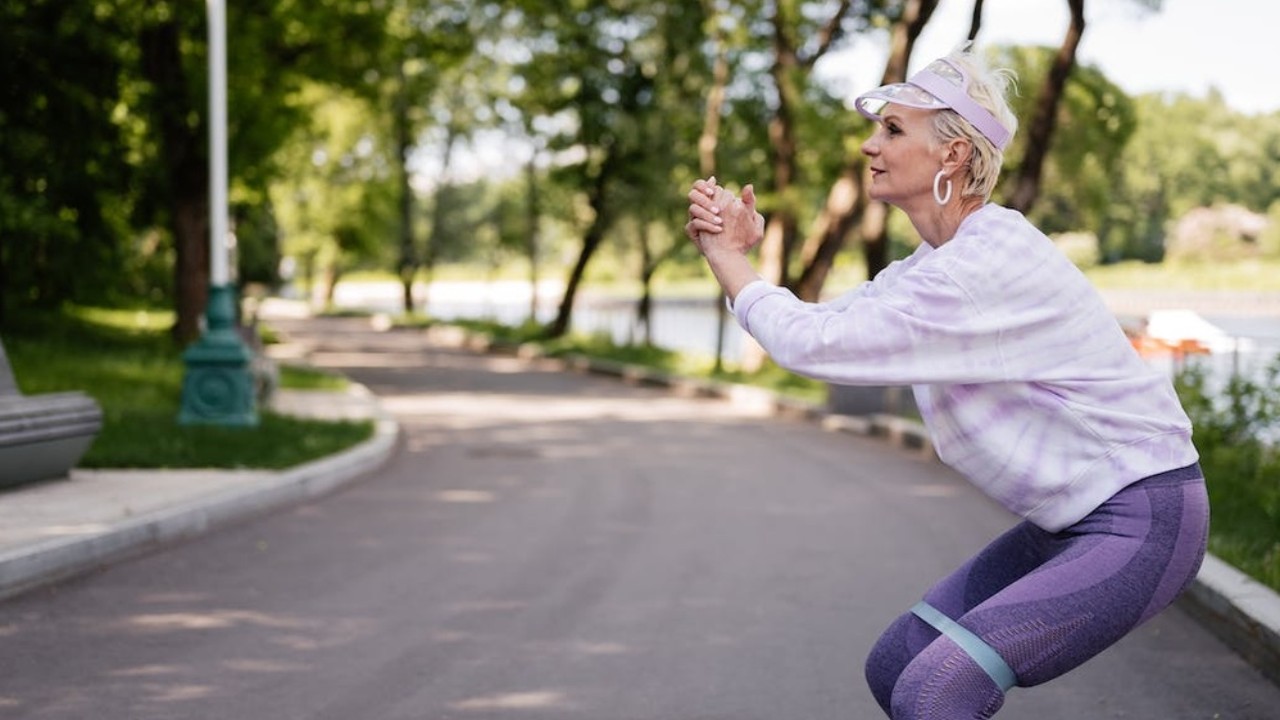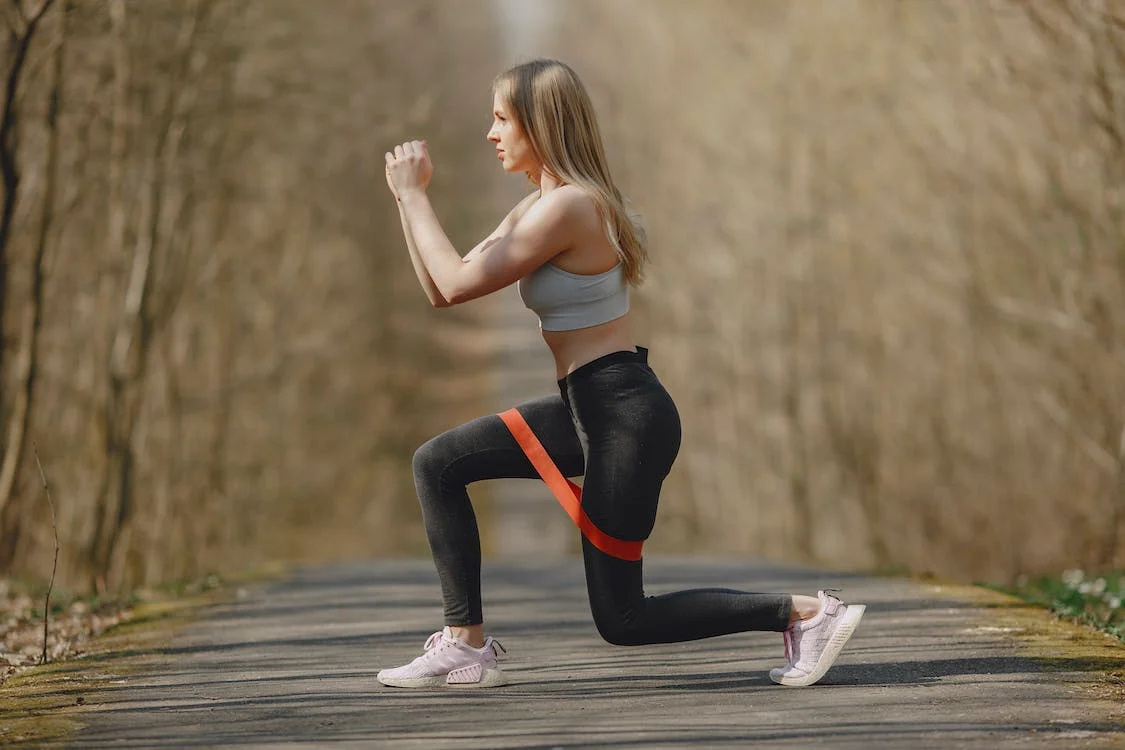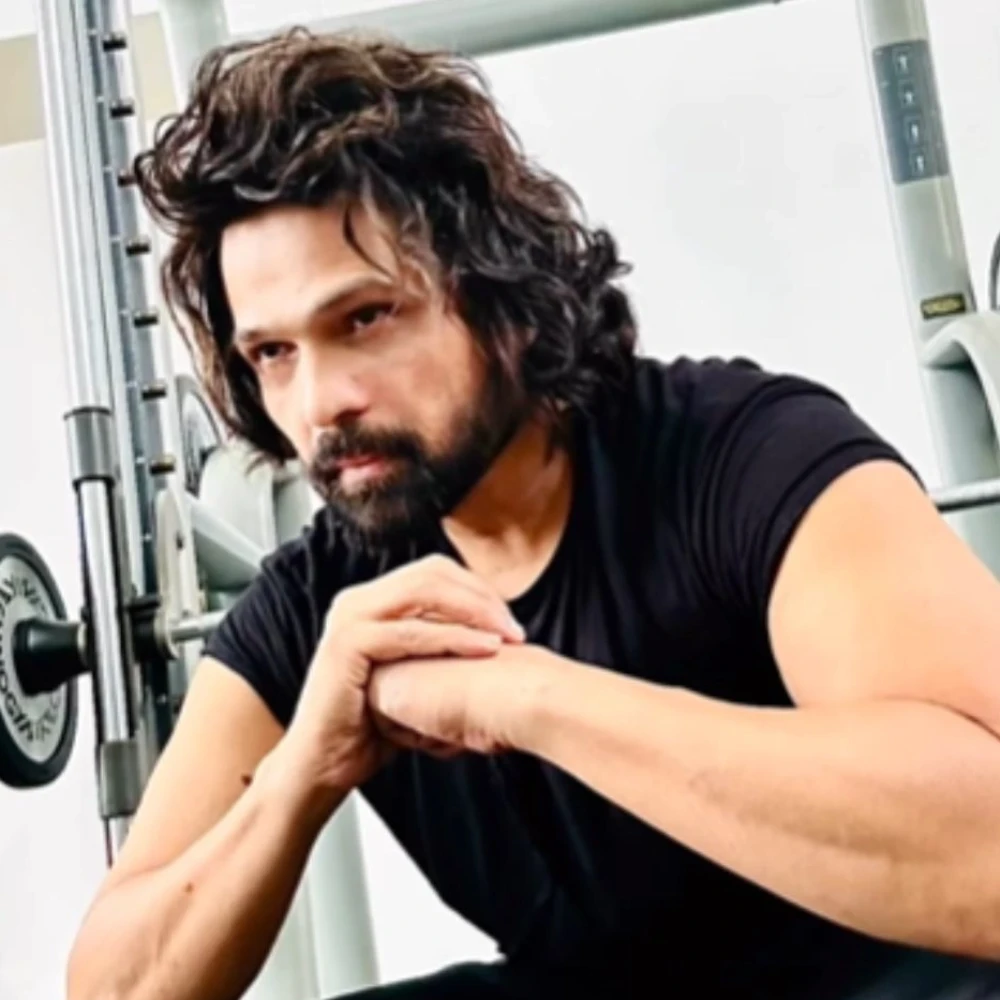10 Resistance Band Exercises for Legs That You Must Try
Tone your lower body without hitting the gym using resistance band exercises for legs. Check out these simple yet effective workouts to spice up your routine.

You can now easily get those killer legs from the comfort of your home with simple resistance band exercises for legs. While most gym workouts target the big muscle groups and core, there's a whole world of band exercises for legs that can diversify your fitness routine. They hit all the key muscles – glutes, hamstrings, quads, and calves.
Resistance bands, unlike kettlebells and dumbbells, place less strain on the joints and can target both large and small muscle groups at the same time (1). Thus even if your gym's miles away or you're just chilling at home, these 10 leg workouts with resistance bands will have your back.
How to Select the Perfect Resistance Band?

When it comes to workout equipment, resistance bands are a popular choice, and for good reason. These stretchy bands, resembling small loops made from rubber or latex, offer a wide range of exercises to amp up your fitness routine. With various weights available, from extra light to ultra heavy, they cater to different levels of fitness.
Choosing the Right Band
Selecting the appropriate resistance band is crucial for a productive workout. Look for a band that allows you to comfortably complete 15 to 20 repetitions of an exercise. Strive to maintain proper form throughout, even during the last reps. If your form deteriorates sooner, opt for a lighter band. Generally, bands with lighter colors signify lower resistance levels.
On the other hand, if you find 15 or more reps easy to perform, challenge yourself by transitioning to a heavier band.
What matters most is your control over the band's movement and feeling the muscles engaging. The key here is feeling the burn!
Who Should Do Resistance Band Exercises for Legs?
Resistance band leg workouts are like secret weapons for lower body muscles. They make you move in the right way and activate those powerful leg and glute muscles (2). Additionally, they aid in strengthening the muscles that surround your knees so they can support greater weight. It is therefore perfect for those who want to prevent knee pain or who have knee pain.
It doesn't matter if you're a beginner or a pro, these bands got your back. Beginners get a form boost, while pros or athletes can jack up the challenge with extra resistance.
They're all about building muscle, pumping up power, and amping up stamina.
10 Best Resistance Band Exercises for Legs

1. Resistance Band Squats
If regular squats are no challenge for you, then it's time to ramp up the intensity with resistance band squats. To perform this correctly, focus on pushing your knees outward to prevent them from collapsing inward. Also, keep your core engaged to maintain an upright chest as you squat.
Steps to Follow:
- Loop a resistance band above your knees.
- Stand with feet hip-width apart and extend arms forward.
- Engage your core and glutes as you lower into a squat, keeping your chest up.
- Drive your knees outward against the band's resistance.
- Press through your heels to stand back up.
- Complete 20 reps for one set.
2. Standing Glute Kickbacks
If traditional squats are becoming a bore, consider adding some variety with standing glute kickbacks. These kicks are excellent for engaging your glutes and giving your backside a good workout.
Steps to Follow:
- Put the elastic band around your ankles and place your feet hip-distance apart.
- Pull in your pelvis and clench your glutes.
- Kick your left leg out behind you until you feel the resistance band stretching.
- Pause for a moment when your leg is extended.
- Gently bring your left foot back to the starting position.
- Aim for 10 repetitions before switching to the other leg.
3. Tabletop Glute Kickbacks
The key challenge here is maintaining stability in your upper body and hips while executing the movement. Visualizing pushing a wall behind you with your heel can assist in proper form. This targets the lower body and intensifies glute engagement.
Steps to Follow:
- Place a band around the arches of your feet.
- Assume a tabletop position with your hips directly aligned over your knees and your shoulders over your wrists.
- Squeeze your glutes and engage your core muscles for stability.
- Begin the movement by kicking your left foot directly behind you.
- As you do so, focus on creating a straight line from your heel to the top of your head.
- Continue the motion and aim to complete 10 repetitions on one side before transitioning to the other side.
4. Resistance Band Leg Lifts
If you're aiming to focus on the often-overlooked muscles in your glutes, hip abduction exercises are a fantastic option. Resistance band leg lifts offer an effective way to engage these muscles while also working on your thigh muscles.
Steps to Follow:
- Place a resistance band around your ankles and stand with your feet hip-distance apart.
- Tighten your glutes and thighs to prepare for the movement.
- Shift your weight onto your right leg for balance and stability.
- Lift your left leg out to the side, squeezing your thighs against the resistance band.
- To ensure proper muscle engagement, place your hands on your hips to feel the targeted muscles working.
- Now bring your left foot back to the starting position with a controlled motion, avoiding letting it touch the ground.
- Aim for a total of 10 repetitions before switching to the opposite leg.
5. Clamshell
The clamshell exercise is an effective thigh band workout for beginners. By widening your thighs against the resistance band, you can amplify the benefits of this movement.
Steps to Follow:
- Place a resistance band just above your knees, encircling your thighs.
- Lie on your right side on a comfortable yoga mat, bending your knees to a comfortable position.
- Place your left hand on your left hip and your head on your right forearm to create a comfortable position.
- Now activate your glutes and thigh muscles to work against the resistance band.
- Press your left thigh outwards as wide as you can while keeping the band taut to feel the contraction in your thigh muscles.
- Slowly lower your left thigh back to the starting position.
- This completes one rep and aims to perform 10 such reps on one side before switching to the other side.
6. Glute Bridge Pulses
This exercise activates your outer thigh muscles, which aids in the movement of your knees outward. It's a great approach to open up the hips and strengthen the pelvic floor.
Steps to Follow:
- Position a resistance band on your thighs, just above your knees.
- Lie on a yoga mat with your knees bent, feet resting flat on the floor, and arms comfortably placed by your sides.
- Begin the movement by tightening your glutes and engaging your pelvic muscles.
- Gradually lift your hips off the ground, pushing them toward the ceiling.
- Now initiate a pulsing motion by gently lifting your hips up and down rhythmically.
- As you pulse, ensure that your buttocks do not touch the ground. This maximizes the engagement of the targeted muscles.
- Aim for 15 to 20 repetitions, maintaining a consistent pace.
7. Resistance Band Reverse Lunge
Reverse lunges prove to be an excellent way to engage multiple muscles in your lower body. Moreover, they're often a more accessible choice for beginners compared to forward lunges. The presence of a resistance band adds an extra layer of intensity to the exercise. The key goal here is to maintain constant tension in the band throughout each repetition. If you sense any decrease in tension, it's a sign that your form might need adjustment.
Steps to Follow:
- Stand upright and secure the resistance band around your right foot.
- Now take a step back with your left foot. As you do so, gradually lower your body until both of your knees are bent to an angle of at least 90 degrees. This position resembles a lunge.
- Make sure that your front knee remains aligned with your ankle and your back knee just above the ground.
- Engage your muscles to push yourself back up to the starting position. This motion helps you regain your standing posture.
- Repeat it on the other leg, and aim to complete 10 repetitions for each leg.
8. Lateral Band Walk
The seemingly straightforward lateral band walk exercise provides a satisfying burn for both your inner and outer thigh muscles. While it might appear simple, the resistance band intensifies the workout, requiring your muscles to work harder.
Steps to Follow:
- Begin by wrapping the resistance band around your ankles. Stand up straight with your feet positioned hip-distance apart. Maintain a slight bend in your knees for comfort.
- Now take a step to the side with your left foot. At this point, your feet should be shoulder-width apart.
- Next, bring your right foot toward your left foot, stepping it in while maintaining the tension on the resistance band.
- Continue alternating this stepping pattern - out to the side and then back together.
- Aim to perform around 10 reps on each side.
9. Diagonal Band Walk
This workout elevates your hip mobility and engages different muscle groups with dynamic movements. Just as with other exercises, maintaining tension in the resistance band is a must.
Steps to Follow:
- Begin by placing a resistance band around your ankles. Stand with your feet positioned hip-distance apart, and ensure there is a slight bend in your knees.
- Initiate a slight hinge at your hips as this prepares you for the diagonal stepping motion.
- To start, take a wide step up to the right side using your right foot. During this motion, ensure that the resistance band remains tight around your ankles, providing continuous tension.
- Once your right foot is in its new position, your feet should now be spaced wider apart than your shoulders.
- Now repeat the same movement on the left side.
- Keep alternating this diagonal stepping pattern - right and left.
- After completing a few repetitions, reverse your steps to return to your starting position. This completes the set.
10. Squat Jacks with Band
Squat jacks are a fantastic exercise that primarily targets your glutes, quads, and calves. They're known to build strength, and agility, and enhance your aerobic fitness. Adding a resistance band to this workout amplifies the advantages and challenges.
Steps to Follow:
- Begin by positioning the resistance band either above your knees for a slightly easier variation or around your ankles for a more intense challenge.
- Assume a quarter-squat position, ensuring your feet are hip-width apart and pointing forward.
- Start the exercise by jumping your feet out to each side.
- Swiftly return your feet to the starting position immediately after the jump. This completes one repetition of the exercise.
- Focus on maintaining a rapid pace throughout the exercise while adhering to proper form.
- Also, ensure that your torso and head are relatively stationary while your legs perform the dynamic movement.
- Continue this sequence as quickly as you can, and for a well-rounded set, aim to complete 20 reps.
Conclusion:
Resistance band exercises for legs are a fantastic method to engage both big and small muscles in your lower body. With a resistance band, your muscles work for a longer time, giving stability to even those muscles that are tough to activate with traditional weights. The key is selecting the right resistance band. Just make sure it's not too easy or too hard to handle – you should feel the burn without losing control.





 JOIN OUR WHATSAPP CHANNEL
JOIN OUR WHATSAPP CHANNEL















































































